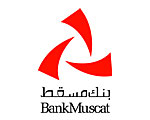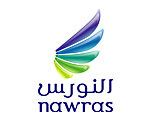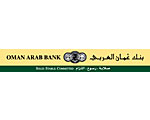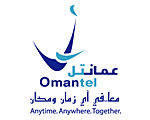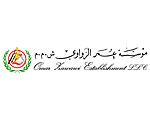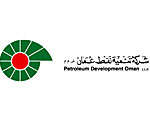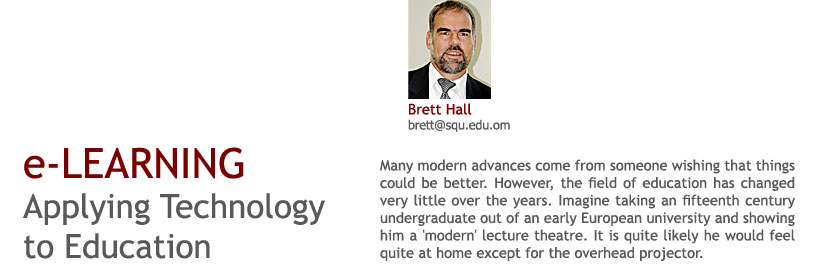
The process of the lecturer verbally delivering educational content to a roomful of students has changed little over the centuries. Does this mean that the lecture teaching method is so well developed it can't be improved or just that no-one has ever wished things could be better?
It is hard to accept either proposal. There must be room for improvement and surely institutions, educators and students are all wishing some things could be better. What would we see if we looked into their minds?
A student dreams ….Wouldn’t it be nice if:
- I could study any course, anytime and not have to deal with timetable clashes.
- I could fire off a question to my lecturer when I come across it rather than remember to raise it in the five minutes at the end of class.
- I could ask the lecturer a question without the embarrassment of speaking in front of classmates.
- My lecturer had an extra 2 or 3 hours a week to answer questions.
- I could hear a wide range of opinions in the class, not just from the pushy few.
- I could do all my studying in one place without having to change rooms every hour.
- When needed, I could spend extended periods of time on one subject or project without being interrupted with the need to attend lectures on other courses.
- I had a way of accessing all the resources I have found useful over the years without having to remember which course notes or text book it came from.
- All the references I have used in essays were available so I can easily reuse them and generate bibliographies in future studies and publications.
- My learning style in formal education matched the practices I will use in the workplace.
- I had continuous access to the materials I have studied on my courses. Better still if I could access it anywhere without having to carry a set of heavy text books around with me.
- I had a means of building personal information resources that I can develop and grow for the rest of my life.
- If I had a simple means of keeping in contact with the people I studied with so I can talk over with them the technical issues I come across in the workplace.
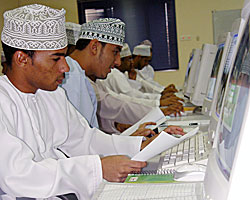
Don’t be mislead - lecturers and college administrators have similar dreams too.
Let’s look at how these dreams could be turned into reality. Recently, a number of key technologies have merged to support education. Together they form the tools of e-Learning, in other words, using the Internet and various computer programs to enhance traditional education. Some of these technologies are identified under general categories such as 'Learning Management Systems' (LMS), 'Content Management Systems' (CMS) or e-Learning Systems. Within these are more specialized tools such as chat rooms, discussion boards, quiz or testing systems, collaborative or general document management tools and student tracking tools to name just a few.
e-Learning can disconnect and reconnect many things in the educational process. For instance, it can disconnect the student from being physically present in the place where the educational material is delivered. It can also disconnect the student from having to lock into a common learning time with a lecturer and students.
These disconnections meet a number of the wishes listed earlier. At the same time the electronic environment of e-Learning reconnects the student in two key areas. First of all, e-mail or messaging puts them more directly in touch with their lecturer at any time. Questions are raised when they are relevant to the student. Students can be connected to one another through discussion boards and collaborative tools. These are continuously available so that the student interacts at personally convenient times. They also remove the time pressure of having to vocalize questions and answers quickly in front of other people. More dreams realized.
e-Learning disconnects students from dependence on paper notes and textbooks. Instead they can be connected to continually updated data sources and can grow their personal set of references and notes in a way that is readily portable and available on into their working career.
The use of e-mail, online discussions and collaborative documents are now common in the modern workplace. e-Learning uses these same technologies and as a bonus prepares the student with work related skills before they enter the workplace.
Coming back to earth, how far away is this technology from appearing in Oman’s schools and colleges? What is available and happening now? In fact, many of the components and foundations needed for e-Learning are already in place. The majority of school age children now have some experience with computers and the Internet.
Access to computers has increased greatly in recent years also. Many schools in Oman now have at least one computer lab and home computers are becoming supermarket commodities. e-Learning does not demand much from personal computers. Even machines from the late 1990s are perfectly capable. More importantly many such machines are being replaced in commercial upgrades and are finding their way into home and educational use. Internet connections are increasing at household level and many communities are served well with internet cafes. In effect, almost anyone in Oman now has the potential to study with e-Learning.
On the supply side, we find that preparations are a little slower. Most teachers and lecturers employed today took their own training a decade or more ago when e-Learning was barely a concept. However, this is being remedied. For example, Sultan Qaboos University (SQU) has regularly provided professional development workshops for its staff. This acquaints them with e-Learning technology from an educator’s perspective. To date, over 200 staff have attended such workshops and almost as many regular courses have some e-Learning content included.
The computing power required to provide small scale e-Learning is modest. Many systems will run on personal computers and are capable of serving several courses with a dozen or more students each. So there is little hardware cost involved for an institution to start experimenting. Once an institution takes on higher loads of e-Learning then more powerful computing and network resources need to be made available. A real option exists here for educational institutions to use professional server farms that have e-Learning systems already set up with experienced staff to customize them for each institution.
There are some very capable e-Learning software systems available in the open source arena. Moodle is an example of this and it even has good Arabic interface. In May this year, a team of e-Learning experts from New Zealand presented a number of Moodle workshops at SQU. Apart from SQU staff, educators from a number of institutions across Oman attended and several of these now have working trial systems in place.
An e-Learning system is nothing without educational content. Just like the early days of the world wide web, the initial content in e-Learning will likely be simple copies of lecture notes and references. However, it will soon go well beyond this. Anyone can see that an online visit to Amazon.com is vastly different to just reading a book store’s inventory list. Similar enrichment of the learning process is expected as educators learn to develop material in a way that exploits the special features of the online environment for educational advantage. This does not happen without commitment. Recent strategic decisions in the Ministry of Education have lead to plans for developing some online content for every subject and every age group in the primary and secondary education sectors. These high quality exemplar modules will inspire future developments and improvement.
Overall, e-Learning is rapidly becoming an essential component of Oman’s educational process and brings with it the most significant changes since the introduction of the printing press. With its rapidly growing workforce of adaptable and well educated graduates, Oman could have a unique role to play with e-Learning in the region. In a similar manner to its success in capturing a regional lead in call centres, Oman may be able to position itself as a leader in developing and providing high quality e-Learning material with a true flavour of Arabic culture.


